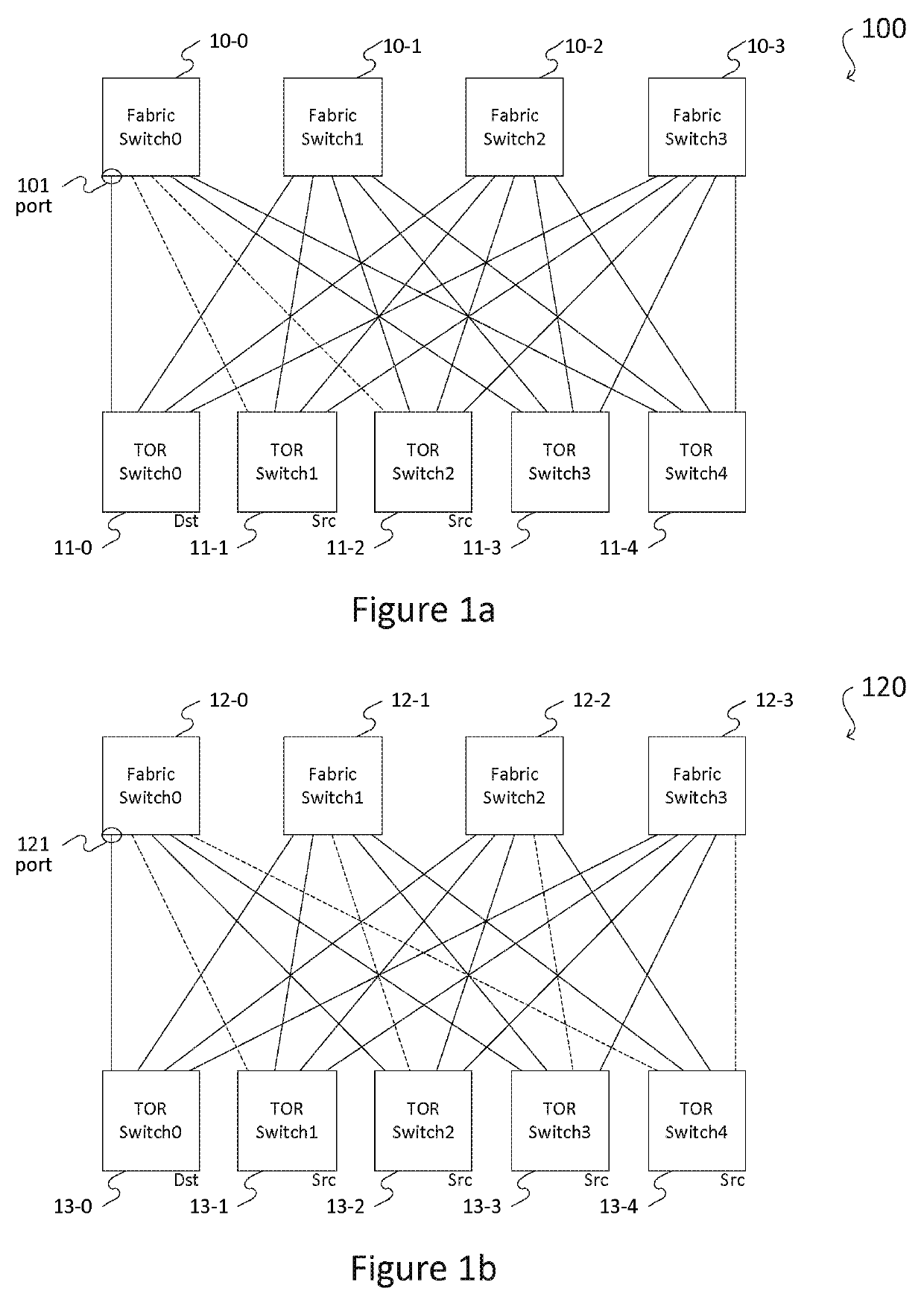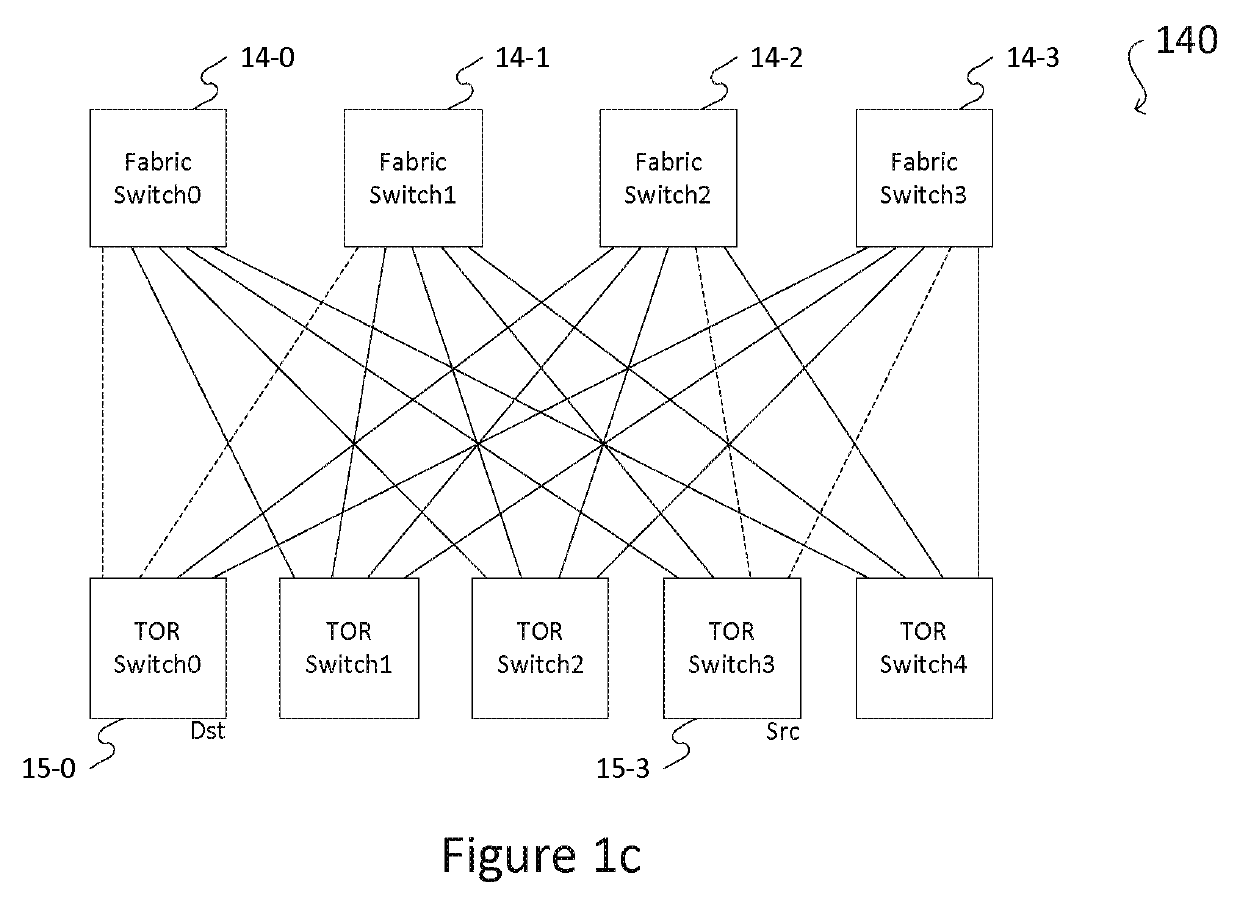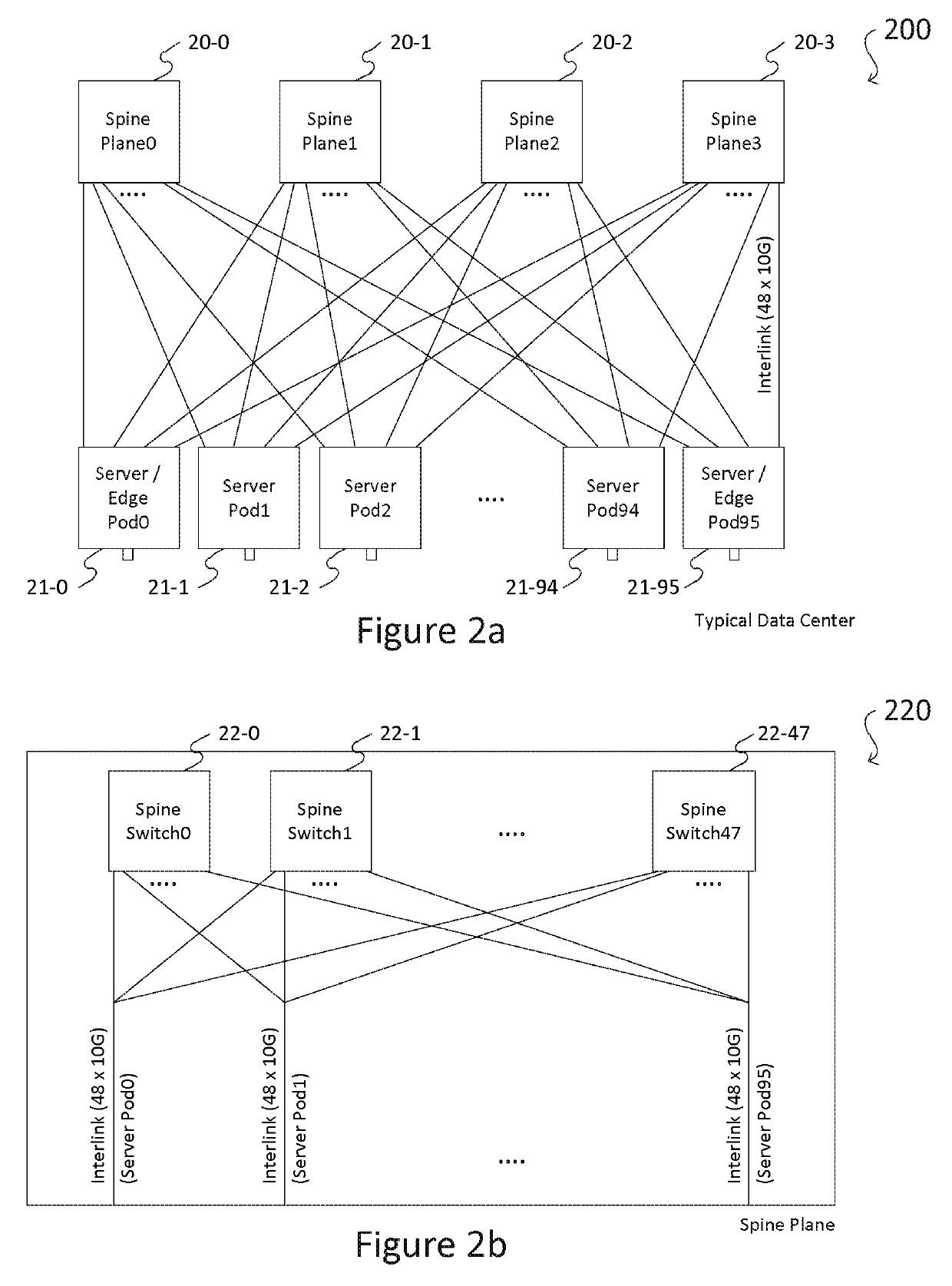Network interconnect as a switch
a network interconnection and switch technology, applied in the field of computer networks, can solve the problems of high hardware requirements, high cost of data switching equipment, and high error-prone communication channels, and achieve the effects of reducing hardware requirements, short built time, and simplifying the data center network infrastructur
- Summary
- Abstract
- Description
- Claims
- Application Information
AI Technical Summary
Benefits of technology
Problems solved by technology
Method used
Image
Examples
Embodiment Construction
[0072]The present invention simplifies the network architecture by eliminating the switches in the fabric layer based on a new fabric topology, referred herein as the “interconnect-as-a-switch” (ICAS) topology. The ICAS topology of the present invention is based on the “full mesh” topology. In a full mesh topology, each node is connected to all other nodes. The example of a 9-node full mesh topology is illustrated in FIG. 3. The inherent connectivity of a full mesh network can be exploited to provide fabric layer switching.
[0073]As discussed in further detail below, the ICAS topology enables a data center network that is far superior to a network of the fat tree topology used in prior art data center networks. Unlike other network topologies, the ICAS topology imposes a structure on the network which reduces congestion in a large extent. According to one embodiment, the present invention provides an ICAS module as a component for interconnecting communicating devices. FIG. 4a shows ...
PUM
 Login to View More
Login to View More Abstract
Description
Claims
Application Information
 Login to View More
Login to View More - R&D
- Intellectual Property
- Life Sciences
- Materials
- Tech Scout
- Unparalleled Data Quality
- Higher Quality Content
- 60% Fewer Hallucinations
Browse by: Latest US Patents, China's latest patents, Technical Efficacy Thesaurus, Application Domain, Technology Topic, Popular Technical Reports.
© 2025 PatSnap. All rights reserved.Legal|Privacy policy|Modern Slavery Act Transparency Statement|Sitemap|About US| Contact US: help@patsnap.com



